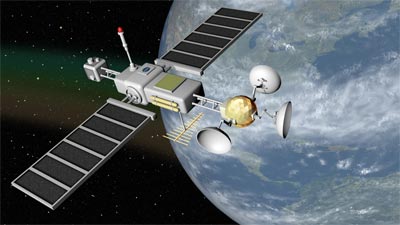Satellite data to provide unparalleled air quality information
 Washington, Feb 6 : In a move to provide ‘state-of-the-art’ information on air pollution causing millions of premature deaths around the world, The European Environment Agency (EEA) has finalised an agreement with an ESA-led conglomerate.
Washington, Feb 6 : In a move to provide ‘state-of-the-art’ information on air pollution causing millions of premature deaths around the world, The European Environment Agency (EEA) has finalised an agreement with an ESA-led conglomerate.
As per the agreement, EEA will use a service that combines and processes satellite data with surface measurements from 29 European countries to deliver accurate information on air quality everyday, to support the implementation of European air-quality policies.
"Sophisticated processing and satellite data from ESA will combine to deliver state-of-the-art information on air quality. This will allow EEA to get the most from ground-based measurements collected through its networks. I am excited about the opportunity that this service creates to help us provide timely information on Europe's environment at an unprecedented level," said EEA Project Manager Tim Haigh.
The 'Integrated Air Quality Platform for Europe’ service, part of the ESA GMES (Global Monitoring for the Environment and Security) PROMOTE (PROtocol MoniToring for the GMES Service Element) project, was developed to provide end-users information about air quality and is currently providing forecasts for up to 72 hours at a resolution of 50 km.
This service comprises of data on ozone, nitrogen dioxide and particulate matter (the sum of all particles suspended in air, including dust, smoke, pollen, etc.). According to Wold Health Organisation (WHO), exposure to these pollutants can lead to adverse health effects like decreased lung function, increased respiratory symptoms and allergic responses.
The service takes into account an ensemble approach by combining three different and thoroughly validated air-quality models: MOCAGE (Meteo-France), EURAD (RIU), and CHIMERE (INERIS). All these models combine together with satellite data using different data assimilation techniques and generate consistent information about air quality.
The Service Level Agreement (SLA) was signed between EEA and the French National Institute for Industrial Environment and Risks (INERIS) and the German Space Agency (DLR).
"A median model ensemble provides air quality forecasts and analyses that are superior to any single model simulation, combining the strengths of different models, and allows [for the] representation of the range of variability of the model responses that is a part of their inherent uncertainty. Therefore, decision makers and regulatory-purpose applications will benefit from this PROMOTE service," said Laurence Rouil from INERIS.
With supporting air quality policies, the service also offers the wider public ability for a better protection of their health by avoiding exposure and taking measures to reduce air pollution. (ANI)
